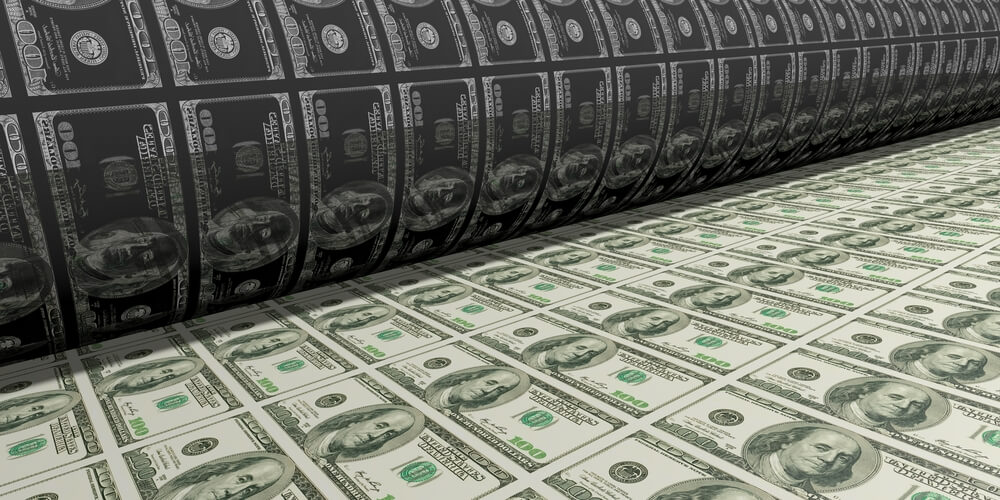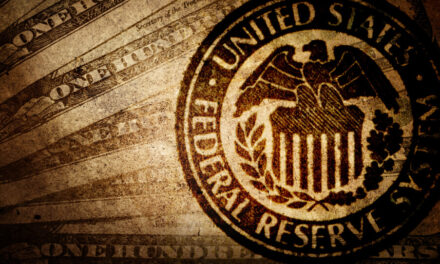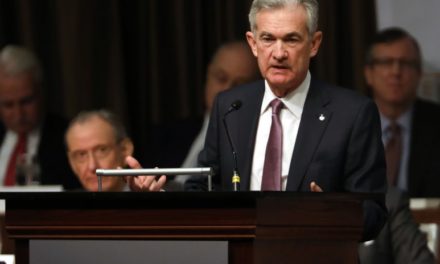Credit Suisse sees the writing on the wall (or maybe the ink in the printer) and warns that the Federal Reserve could start another aggressive money-printing campaign, or QE4, to provide some easing amid low reserves.
Zoltan Pozsar, Credit Suisse’s managing director of investment strategy and research, thinks the Fed will have to start its fourth round of quantitative easing by the end of 2019. This quantitative easing (or “money printing”) allows the central bank to create digital currency used to buy bonds from big banks, which in turn flushes the system with new cash.
“If we’re right about funding stresses, the Fed will be doing ‘QE4’ by year-end,” Pozsar wrote in a note to clients, according to CNBC. “Treasury yields can spike into year-end, and the Fed will have to shift from buying bills to buying what’s on sale — coupons.”
The Fed is currently purchasing short-term Treasury debt in the form of T-bills (which it insists isn’t quantitative easing) in an effort to keep its benchmark interest rate between the 1.5% to 1.75% target range. The repo market, an overnight market that lends funds to banks for critical operations, started running out of money after a rates spike in September, which sparked the Fed to step in.
Pozsar says the issue isn’t being fixed, though, and QE4 may be the answer.
“The Fed’s liquidity operations have not been sufficient to relax the constraints banks will face in the upcoming year-end turn,” Pozsar said.
And he said it could get even worse if another rate spike hits carry trades, a transaction where an institution uses lower-yielding currency to buy higher-yielding currencies while pocketing the difference.
“If carry makes the world go ’round, and reserves make carry possible … the day we run out of reserves would be the day when the world would stop spinning.” Pozsar warned. “No, this is not an overstatement.”
What Caused the Fed to Consider QE4
Two forces combined to create the conundrum the Fed is in now. The central bank raised rates four times in 2018 and then proceeded to cut its balance sheet and bond holdings too quickly. On top of that, the Basel III international banking guidelines became too strict concerning capital requirements.
The Fed’s reserves were around $1.8 trillion before the balance sheet rundown that sent that number down to $1.4 trillion in September, but the Fed isn’t quite sure what the reserve total should be.
And Pozsar thinks the Fed could use QE4 to supply funds “through the backdoor” using bond buybacks to purchase the supply that banks were forced to buy during the balance sheet rundown. It would in effect be “giving back the reserves they gave up in the process.”
The Fed’s recent efforts to keep rates steady have been working. The funds rate has been trading at 1.55%, which is on the lower end of the scale, but it’s still within that target range. The central bank would definitely be happier if it was closer to the midpoint, or 1.62%, though.
Since the Fed started buying Treasury bills it has only expanded its reserves by around $110 billion while increasing its balance sheet by almost $300 billion to $4.1 trillion. Which leaves the door open for QE4.
And an analysis released Monday by the Bank for International Settlements said the Fed’s funding issues aren’t over, and repo volatility is a huge risk.
“Any sustained disruption in this market, with daily turnover in the US market of about $1 trillion, could quickly ripple through the financial system. The freezing-up of repo markets in late 2008 was one of the most damaging aspects of the Great Financial Crisis,” the BIS said.
But the BIS did say that the Fed’s recent actions “have calmed markets.”




